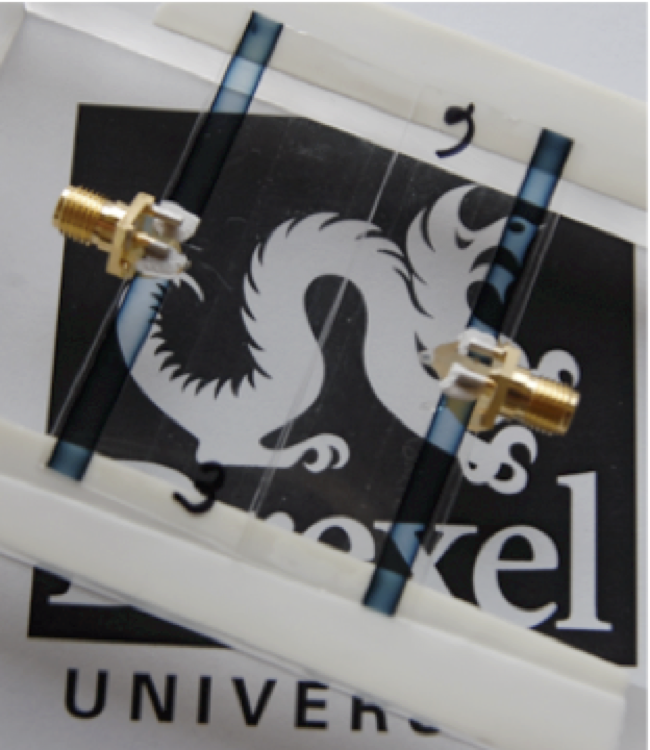There is a fundamental disconnect between Internet of Things systems research and research dealing with the development of new antenna technologies. The antenna portion of the RF transceiver is often overlooked during the commercial product development process. The antenna is often considered to be a “black box’’ in communication system design and most research and development focuses on either the antenna subsystem or the communication protocol stack without considering the inter-dependency of the two. Using a SDR testbed-centric approach, DWSL has an end-to-end system approach to antenna design. Using fabrication facilities in collaboration with the Drexel Center for Functional Fabrics, NanoPhotonics Lab, and Drexel Nanotechnology Institute, we have developed several non-traditional antenna technologies using either unconventional materials or substrates to realize antennas for wireless systems. Antenna samples are shown below, and some of these innovations include:

- Transparent Antennas for the Internet of Things – DWSL has developed technology and intellectual property relating to the printing of antennas and radiating structures with organic and optically transparent conductive polymers. Drexel is equipped with a unique materials printer and associated chemical and characterization facilities to allow for the realization of a wide variety of transparent antenna formulations trading off conductivity for optical transparency. These transparent antennas have potential applications in LAN, satellite radio, cellular and RFID systems.
- Textile Antennas for Medical Body Worn Networks – Through a unique collaboration between DWSL and the Drexel Center for Functional Fabrics, we have developed techniques and facilities for realizing knitted conductive structures in fabric. With Coulter Foundation funding as well as support from the NSF #1430212 and NIH #U01EB023035, we are using these knitted electronics capabilities to develop intellectual property in the area of medical body-area sensor networks. For example, we are developing technology that will allow for unobtrusive sensor systems for sleep monitoring applications as well as a knitted “belly band’’ to monitor uterine activity and assess fetal well being.
- Spray Paintable Antennas – Through collaboration with the Drexel Nanotechnology Institute, we have developed RF devices for wireless communication based on metallic two-dimensional (2D) titanium carbide (MXene) prepared by a single-step spray coating, or “spray painting”. Our finding shows that 2D titanium carbide MXene operates below the skin depth of copper or other metals as well as offers an opportunity to produce transparent antennas. Being the most conductive, as well as water-dispersible, among solution-processed 2D materials, MXenes open new avenues for manufacturing various classes of RF and other portable, flexible, and wearable electronic devices for the Internet of Things.
